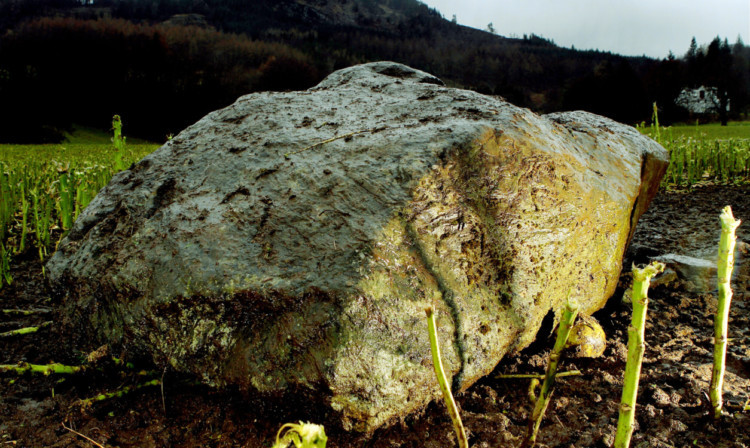After standing for almost 6,000 years, a monument in Highland Perthshire has been felled by the weather.
Days of heavy rain proved to be too much for the Dane’s Stone, which is believed to date back to the neolithic era or Bronze Age. The megalith succumbed to the wet conditions and toppled over.
Marianne Carruthers told The Courier she heard the stone hit the ground from 50 yards away as she sat in her Moulin home.
“I went to the window but couldn’t see anything,” she said.
“It wasn’t until half an hour later that I noticed something was amiss and the stone just didn’t seem to be there anymore.
“I actually took off my spectacles and cleaned them because I thought I was seeing things. I couldn’t believe it.”
Fortunately, the impressive quartzite structure was not damaged by the fall and Mrs Carruthers revealed that it seemed to be balanced on a pile of smaller stones.
She continued: “My son went over to have a closer look and he thought it had fallen over because of the wearing away of the soil.
“It seems to have been held in place by rocks wedged in beside it.”
Regarded as a scheduled ancient monument, the Dane’s Stone stands at almost 2m tall and boasts a rich history.
The field it stood in was once the site of Moulin Market, which was the largest event of its kind in the area and took place every March.
David Strachan, of Perth and Kinross Heritage Trust, spoke of the stone’s impressive origins.
He said: “It is a prehistoric stone and probably dates back to between 4,000BC and 1,000BC. The name Dane’s Stone was probably given during the Middle Ages, around about the time of the Vikings.
“We don’t really know a huge amount about what these stones are for, but many do have ritual or religious significance.”
He believes the Dane’s Stone was likely used at the heart of funerals and burials and described such structures as being “like churches” of ancient times.
Experts from Historic Scotland will now be assessing the damage and outlining plans to have the megalith standing proudly once again.
No one from the organisation was available for comment on Wednesday, but Mr Strachan revealed that excavations would be taking place in the future to uncover more about the stone’s past.
